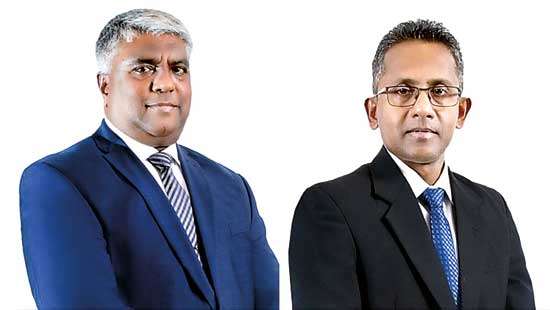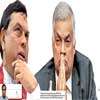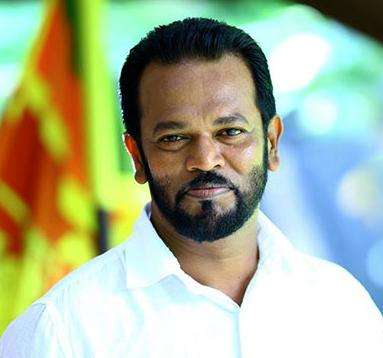
Rajapaksas see ‘federalism flogging’ as shortest route to achieve goals
Bogey of federalism leading to separatism being revived
‘Unitary vs. federal’ dimension as new cutting edge to anti-federal campaign
ITAK accused of attempting to divide country by espousing federalism
Obstinate insistence upon the term ‘unitary’
By
D.B.S. Jeyaraj

The year was 1985. Junius Richard Jayawardene was the Sri Lankan President while Rajiv Gandhi was Prime Minister of India. The New Delhi facilitated talks between an official Sri Lankan Government delegation and six entities representing the Sri Lankan Tamils were going on in the Bhutanese capital of Thimphu during the months of July and August. The Sri Lankan delegation was led by President Jayewardene’s brother H.W. Jayawardene. The Tamil side comprised the then premier Tamil political party, TULF, and five Tamil armed organisations namely PLOTE, LTTE, TELO, EPRLF and EROS.
There was much excitement in the country and the Thimphu talks were the talk of the town. There were many discussions about a viable alternative being formulated to replace the separatist Tamil Eelam demand. Much of the debate centred around a power sharing settlement on federal lines. I was then working for The Island and wrote a weekly column on Tamil affairs titled ‘Behind the Cadjan Curtain.’ I had also returned from India after meeting with many Tamil political and militant leaders based in Tamil Nadu. The well-known media personality Richard de Zoysa was then trying to work out a special feature for Rupavahini on reactions of the “common man” to Thimphu talks in Sri Lanka. If I remember correctly, the Rupavahini Chairman then was M.J. Perera while the Director-General was Anura Gunasekera.
Richard wanted me to help out with the feature and I readily agreed. One day, Richard asked me to drop in at the TV studio to view some footage relating to the project. These were random, man in the street type of interviews. The interviewees from different walks of life were asked questions about the ethnic conflict, separate State, division of the country, political solution, devolution and a federal arrangement. Most of the answers were in the affirmative. There was also a visible authenticity about the opinions expressed.
I still recall becoming “emotional” at the positive responses of the ordinary people, most of them Sinhalese. Although I do not recollect all that was said, I remember vividly that most of the people without any “prompting” opined that the Tamil people of Sri Lanka had problems and that they should be solved through a political settlement in an undivided Sri Lanka. Many of them were amenable to a federal scheme which they pronounced as “Pederal.” They insisted however that the country should not be divided but a federal solution was acceptable. One newspaper vendor was emphatic. “Rata bedanda baa, habaai pederal dhenda” (The country can’t be divided but give federal/federalism). I remember this well because, for a long time, Richard and I used to repeat that line in conversations and chuckle over.
GENUINE PRO-“PEDERAL” VIEWS
The envisaged feature never got off the ground. The powers that be at Rupavahini were aghast about these genuine “pro-pederal” views being expressed over State TV and vetoed it. That episode about “Rata bedanda baa, habaai pederal dhenda” remains etched in memory. It was an eye-opener then. It made me realise at that time that despite the sustained campaign of demonising federalism and distorting its essence, there were many ordinary people in the country who understood the basics of what “pederal” was and did not perceive it as a danger at all. I have frequently heard some members of the Sinhala elite say the Sinhala masses don’t understand what federalism is and so would oppose it. The reality is that of the elitist and educated classes portraying federalism as an abhorrent evil more than the masses do.
What saddens me most in the anti-federalism crusade is the tacit silence and/or deliberate falsehoods spread by knowledgeable Sinhala persons whose hearts and minds know the truth about federalism. They do so for what they perceive as political gain. It is indeed painful to see a former Rhodes scholar who co-drafted the finest package of power sharing proposals in the past now wallowing in the muddy puddle like a fallen angel. Within the current context, the Rajapaksas yearning to return to power see “federalism flogging” as the shortest route to their goal. Therefore, an intensive campaign of denouncing federalism as separatism seems inevitable in the future as elections draw near.
I was reminded of the Rupavahini “pederal” interviews in the present situation where the anti-federalism campaign has been ignited once again after the release of the “draft of a draft Constitution.” Once again, the spectre of federalism as an “F-word” is being raised. The bogey of federalism leading to separatism is being revived. I often wonder what the genuine reactions of the ordinary people would be to this scenario where notable votaries are breathing fire and brimstone against federalism in the name of the masses. All the “patriots” claim that they speak on behalf of the masses who are supposedly against federalism. Most of the related arguments shed more heat and less light. Much of the heat generated is about the nature of the state and systems of governance. The new cutting edge to the anti-federal campaign is the unitary vs. federal dimension. The fresh controversy generated by the new “draft of a draft” Constitution seems to revolve primarily around the “counterfeit conflict” between federal and unitary.
The fresh controversy generated by the new “draft of a draft” Constitution seems to revolve primarily around the “counterfeit conflict” between federal and unitary
“VERITE RESEARCH” THINK TANK
The independent think tank “Verite Research” made some pertinent observations after surveying and analyzing media reports about the debate surrounding the new draft Constitution. Here are some relevant excerpts:
“The bases of justification proponents included UNP actors in government and other commentators, who defended constitutional reforms on the basis that a democratic and inclusive process has been employed for the creation of a new Constitution – with the implication that the integrity of the outcome could be justified by the fairness of the process. Government actors also sought to refute, as false, opposition claims about the outcome. For instance, government actors refuted the claim that a federal State would be introduced through the reforms. Meanwhile, opponents focused their critique on the outcomes (rather than the process) of reforms, arguing that a new Constitution was a Trojan Horse, paving the way for a federal State at the behest of the TNA-driven “havula” and that it would result in dividing the country. This outcomes-focused critique was bolstered by also questioning the integrity of the drafting process. The opposition claimed that their proposals and recommendations were not properly incorporated during the process.”
“Overall, Sinhala press coverage of constitutional reforms currently reflects the perception of a binary choice between a unitary and federal State, rather than a spectrum of possible arrangements between the two systems. This false binary undergirding Sinhala press debate has had the effect of diminishing the space to consider positions that are ‘in-between’ unitary and federal. In fact, this false binary has allowed such positions to be delegitimised on both sides of the debate.”
“For instance, M.A. Sumanthiran is criticised by: (i) the UPFA on the one hand for ‘deceiving’ the Sinhala people by espousing a Constitution that is federal – argued to be so because it is not unitary − and (ii) by Tamil political actors on the other for capitulating to a Constitution that is unitary – argued to be so because it is not federal. However, the formulation suggested by the expert panel on constitutional reforms of ‘an undivided and indivisible’ State (termed ‘ekeeya rajyaya/orumiththa nadu’) in its report also falls outside this unitary vs. federal binary and this seems to be the understanding that is missing in the Sinhala press.”
“Meanwhile, there was a third position adopted in the alternative press. This position is based on the view that in the current political climate, there is no possibility of passing a new Constitution. Therefore, the government and opposition parties’ positions on constitutional reforms were dismissed as mere political posturing, motivated by a need to generate support in their respective constituencies before elections. This critique also assumes the false binary described above − characterising the TNA as espousing a federal constitution despite the TNA position only being one of a non-unitary Constitution. Rather than generating support, this position falls short of the expectations of its constituency.”
UNITARY-FEDERAL FALSE BINARY
Verite research comments about the false binary between unitary and federal are very illuminating. Even those dedicated Parliamentarians and panel of experts engaged in Constitution-making were fully cognizant of this contrived clash between federal and unitary. That is why they came up with the idea of using different terms when describing the nature of the State. The interim report by the Steering Committee of the Constitutional Assembly shows that a creative compromise was achieved as far as the nature of the state was concerned. Instead of explicitly describing the State as unitary or federal, a “middle way” was found. The report emphasised that “Sri Lanka should remain one undivided and indivisible country.”
The report observed, “The President, whilst speaking on the resolution to set up the Constitutional Assembly, stated that whilst people in the South were fearful of the word “federal,” those in the North were fearful of the word “unitary.” A Constitution is not a document people should fear. The classical definition of the English term “unitary State” has undergone change. In the United Kingdom, it is now possible for Northern Ireland and Scotlandto move away from the union. Therefore, the English term “unitary State” will not be appropriate for Sri Lanka. The Sinhala term “aekiya raajya” best describes an undivided and indivisible country. The Tamil language equivalent of this is “orumiththa nadu.” The report went on to say “In these circumstances, the following formulation may be considered: Sri Lanka (Ceylon) is a free, sovereign and independent republic which is an aekiya raajya/orumiththa nadu, consisting of the institutions of the Centre and of the provinces which shall exercise power as laid down in the Constitution. In this article, aekiya raajya/orumiththa nadu means a State which is undivided and indivisible, and in which the power to amend the Constitution, or to repeal and replace the Constitution, shall remain with the Parliament and the people of Sri Lanka as provided in this Constitution.”
As stated earlier, the usage of the Sinhala word “aekiya raajya” and Tamil word “orumiththa nadu” to describe the nature of the State was a very creative and commendable compromise. Linguistic scholars and translation experts on either side of the ethnic divide were consulted before reaching a final decision. Yet, these words or terms are now being assailed by persons engaging in – what Sinhala cinema’s superstar Gamini Fonseka was fond of describing as – third-class politics.
After the regime change on January 8, 2015, Kanagasabapathy Sripavan was sworn in as Chief Justice on January 30, 2015. He did not wish to hear the case due to personal reasons. He recused himself. Thereafter, the case was heard by a bench presided over by the next senior most judge Priyasath Dep PC
TRAGI-COMIC SIGHT INDEED
Conspiracy theories are being floated about the hidden duplicity of the Tamil word “orumiththa nadu” to whip up fears among the Sinhala people. It is indeed a tragi-comic sight. The tragedy is seeing Sinhala politicians ignorant of Tamil lecturing on the meaning of words in the Tamil language like “orumiththa nadu”, “ottrai aatchi” and “our nadu.” The comedy is seeing Douglas Devananda of the EPDP echoing this garbled gibberish and pontificating like a pundit on the finer points and nuances of the vocabulary prevailing in his mother tongue.
What seems to be ignored, overlooked or glossed over in this mad scramble to condemn federalism and the separatist threat posed by it, is a far-reaching judgment delivered by the Sri Lankan Supreme Court. On August 4, 2017, a three-member Supreme Court bench comprising the then Chief Justice Priyasath Dep and Justices Upali Abeyratne and Anil Goonaratne delivered a landmark ruling that gave a clean chit to the federal form of governance or federalism. I have already written about this path-breaking verdict. However, I intend revisiting the salient aspects of the ruling in view of its importance and relevance in the present situation where federalism is being falsely portrayed as separatism.
The Supreme Court on August 4, 2017, dismissed the petition filed by Don Chandrasoma of Kelaniya who had sought a court order declaring that Illankai Thamil Arasu Katchi (ITAK) had, as one of its “aims” and “objectives,” the establishment of a separate State. The case filed on March 27, 2014, by H.K. Don Chandrasoma in the Supreme Court sought a declaration under Article 157A(4) of the Constitution which was introduced by the 6th Constitutional Amendment that ITAK had, as one of its aims or objectives, the establishment of a separate State within the territory of Sri Lanka.
The SC affirmed in its ruling that ITAK “does not support, espouse, promote, finance, encourage or advocate the establishment of a separate State within the territory of Sri Lanka as envisaged under Article 157A of the Constitution.”
The landmark judgment was written by Chief Justice Priyasath Dep with Justices Upali Abeyratne and Anil Goonaratne concurring. The petitioner was Hikkadu Koralalage Don Chandrasoma of G-16, National Housing Scheme, Polhena, Kelaniya. The petitioner was represented by Counsel Dharshan Weerasekera and Madhubashini Rajapaksha.
SOMASUNDARAM “MAAVAI” SENATHIRAJAH
The first respondent was Jaffna District MP “Maavai” S. Senathirajah. Somasundaram Senathirajah hails from the Northern village of Maaviddapuram known as “Maavai.” He is generally known as Maavai Senathirajah with the prefix “Maavai” attached to his name. Senathirajah is the President of Illankai Thamil Arasu Katchi which is the chief party within the configuration known as the Tamil National Alliance (TNA). The TNA contests polls under the House symbol allocated to the ITAK. Senathirajah was the Secretary of ITAK with its headquarters in 30, Martin Road, Jaffna, when the case was filed. Hence, he was designated as the first respondent.
Subsequently, Senathirajah relinquished his secretarial post and became President of ITAK. Former Eastern Province Minister and lawyer K. Thurairasasingham took over as Secretary. Thereafter, the new ITAK Secretary Thurairasasingham’s name was substituted in place of “Maavai” Senathirajah as the first respondent. The other respondents were the Elections Commissioner and the Attorney General. Senior lawyers K. Kanagiswaran PC and M.A. Sumanthiran PC along with Attorneys-at-Law Viran Corea and Niran Anketell appeared for the first respondent/s. Deputy Solicitor General Nerin Pulle and State Counsel Suren Gnanaraj appeared for the AG.
H.K. Don Chandrasoma’s petition was filed on March 27, 2014 (3/2014). The petitioner sought a Supreme Court declaration under Article 157A (4) of the Constitution that ITAK had, as one of its aims or objectives, the establishment of a separate State within the territory of Sri Lanka. Petitioner Don Chandrasoma was represented by his Counsel Dharshan Weerasekera.
After the regime change on January 8, 2015, Kanagasabapathy Sripavan was sworn in as Chief Justice on January 30, 2015. He did not wish to hear the case due to personal reasons. He recused himself. Thereafter, the case was heard by a bench presided over by the next senior most judge Priyasath Dep PC. The other members of the three-member bench were Judges Upali Abeyratne and Anil Goonaratne. The case then proceeded at its own pace subject to the law’s customary delays. Obtaining translations of relevant documents and particulars impeded the pace to some extent.
FINAL RULING ON AUGUST 4, 2017
The main arguments by respective counsel were on February 18, 2016. Written submissions were filed on April 18 and May 3 in 2016 respectively. With Chief Justice K. Sripavan retiring, Judge Priyasath Dep became Chief Justice on March 2, 2017. The final ruling was delivered on August 4, 2017. Chief Justice Dep wrote the judgment with Justices Abeyratne and Goonaratne concurring.
A brief perusal of the Supreme Court judgment provides a valuable insight into the nature and direction of the case. Petitioner R.K. Don Chandrasoma relied on Article 157A (4) in petitioning the Supreme Court to issue a declaration regarding ITAK. The relevant clause says:
(4) - “Where any political party or other association or organisation has as one of its aims or objects the establishment of a separate State within the territory of Sri Lanka, any person may make an application to the Supreme Court for a declaration that such political party or other association or organisation has as one of its aims or objects the establishment of a separate State within the territory of Sri Lanka. The Secretary or other officer of such political party or other association or organisation shall be made a respondent to such application.”
Article 157A (5) outlined penalties to be imposed upon a party or organisation found to be promoting the establishment of a separate State within Sri Lankan territory.
Based on the above mentioned clauses, the petitioner in his petition dated March 27, 2014, prayed for following reliefs:
i) A declaration that ITAK is a political party which has as one of its “aims” and “objects” the establishment of a separate State within the territory of Sri Lanka.
ii) An order that ITAK and its members, in consequence of the declaration issued under Article 4 of the 6th Amendment to the Constitution [157A (4)], are subject to the provisions of Article 5 of the 6th Amendment [157A (5)].
The crux of the petitioner’s argument was that ITAK had supported the TULF Vaddukoddai Resolution calling for a separate State, and that this combined with its position that the Tamil people were entitled to the right to self-determination demonstrated that it had, as one of its aims or objectives, the establishment of a separate State. ITAK in its response claimed that self-determination could be exercised within a State, citing judgments from the International Court of Justice and the Canadian Supreme Court. ITAK also claimed citing its election manifestos and statements that it stood for federalism within a united and undivided Sri Lanka.
SALIENT POINTS IN SC RULING
It was against this backdrop that the Supreme Court entered judgment. Among the salient points in the SC ruling were;
- Advocating federalism is not the same as advocating a separate State;
- The invocation of self-determination does not amount to a demand for a separate State:
- The labelling of States as unitary and federal sometimes may be misleading. There could be unitary States with features or attributes of a federal State and vice versa;
- It was clear that ITAK did not have as its aims or objects the demand for a separate State.
Important extracts from this landmark judgment by the Supreme Court of Sri Lanka are as follows;
“It is established that there is a clear distinction between words ‘federation’ and ‘confederation’. The main issue in this case is whether advocating the establishment of a federal State is tantamount to establishment of a separate State. It is relevant to consider the manner in which federal States were formed in various parts of the world. The United States of America, Australia and Switzerland are federal States. Thirteen States which were former colonies of Great Britain joined to establish the United States of America.
The reason for uniting under one State is to promote trade and to ensure the security of the States. Six States in Australia, in fear of pacific powers, united to establish a federal State. In order to remove linguistic and regional differences, the Swiss federation was formed. Great Britain, France and Italy are examples of unitary States.”
LABELLING AS UNITARY AND FEDERAL
“The labelling of States as unitary and federal sometimes may be misleading. There could be unitary States with features or attributes of a federal State and vice versa. In a unitary State, if more powers are given to the units, it could be considered as a federal State. Similarly, in a federal State, if the centre is powerful and the power is concentrated in the centre, it could be considered as a unitary State. Therefore, sharing of sovereignty, devolution of power and decentralisation will pave the way for a federal form of government within a unitary State.”
“The 13th Amendment to the Constitution devolved powers on the provinces. ITAK is advocating for a federalist form of government by devolving more powers to the provinces within the framework of a unitary State. Advocating for a federal form of government within the existing State could not be considered as advocating separatism.”
“It is established that ITAK supports or advocates the establishment of a federal State within united Sri Lanka. It does not support, espouse, promote, finance, encourage or advocate the establishment of a separate State within the territory of Sri Lanka as envisaged under Article 157A of the Constitution. Therefore, the petitioner is not entitled to a declaration under Article 157A (4). Application dismissed. No Costs.”
From the very early years since its inception in December 1949, ITAK known as Federal Party in English had been accused by its political detractors of being a party attempting to divide the country by espousing federalism. This has led to the growth of an erroneous impression among many Sri Lankans that federalism amounts to separatism. In its long political journey, ITAK/FP found this perception of equating federalism with secessionism a major obstacle in pursuing the objective of power sharing through negotiations.
“FEDERALISM IS SEPARATISM” FALLACY
The Supreme Court ruling of August 4, 2017, however went against the grain of this “federalism is separatism” fallacy. The three-member bench ruled that “advocating for a federal form of government within the existing State could not be considered as advocating separatism.” Furthermore, the SC observed that ITAK advocated a federalist form of government by devolving more powers to the provinces within the framework of the existing State.
In essence, this judgment de-mystified the false arguments and fallacies surrounding federalism and strengthened the right to advocate federalism as a form of government through legitimate democratic processes. Obviously, anyone with a modicum of common sense and basic awareness of the federal idea would know federalism is not and does not amount to separatism.
Unfortunately, the course of majoritarian politics in Ceylon/Sri Lanka had been one where a vast number of people were made to believe federalism was tantamount to separatism. The fact that a federal form of government had been advocated by a Tamil political party further strengthened this erroneous belief.
Matters got further complicated when ITAK/FP became the chief constituent of the Tamil United Liberation Front (TULF) in 1976 and contested the 1977 polls on a separatist platform. The lines between federalism and secessionism got further blurred.
The judgment of August 4, 2017, has laid to rest the bogey of “federalism is separatism” in legalistic terms. It has also made it clear that labels such as unitary or federal could be misleading. A unitary State could have federal powers and vice versa. The larger political question however remains. The challenge faced by proponents of federalism is to convincingly propagate the truth about federalism not being separatism to the people of Sri Lanka in general and the Sinhala people in particular.
The August 4 ruling in that sense may be able to provide an impetus to ITAK in its negotiations and discussions within the Constitutional Assembly engaged in the task of formulating a new Constitution.
More importantly, the landmark judgment can also enable all those supportive of the federal idea to advocate those convictions freely without fear of being branded separatists.
“RATA BEDANDA BAA, HABAAI PEDERAL DHENDA”
In spite of the August 4 ruling by the Supreme Court, the anti-federalism camp continues to tar brush federalism as separatism. It is against this backdrop that those drafting the draft Constitution came up with the ‘aekiya rajyaya/orumiththa nadu’ concept. Now that is also being willfully misconstrued and distorted.
There is an obstinate insistence upon the term unitary. There is a cacophony of voices emulating the cackle in George Orwell’s “Animal Farm” and repeating ad nauseam “unitary good, federal bad.” Even a positive attempt to bring out the federal characteristics of a unitary Constitution seems impossible in this environment. In such a situation, I can only nostalgically revive fond memories of the time when the Colombo newspaper seller emphasised, “Rata bedanda baa, habaai pederal dhenda.”
D.B.S.Jeyaraj can be reached at dbsjeyaraj@yahoo.com
























